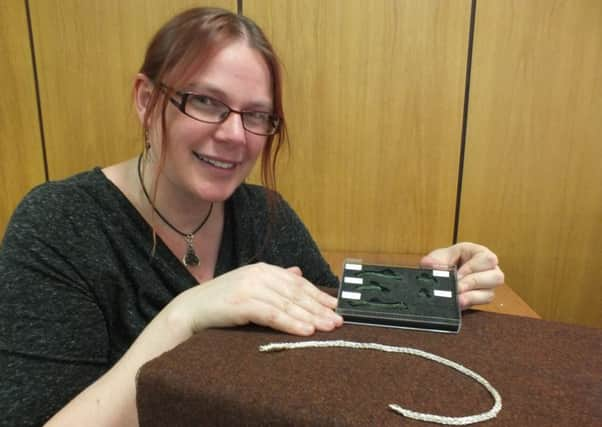Remains of medieval whip unearthed at Rufford Abbey


The monastic scourge find was made by community archaeologists during a dig underneath the meadow at Rufford Abbey, during 2014, with a stain of green colouring in the soil surrounding the copper metal, but the significance of the find has only just been made following tests.
A similar metal scourge found at Rievaulx Abbey, another former Cistercian abbey, in Yorkshire, is on display there.
Advertisement
Advertisement
A third has previously been found at Grovebury Priory in Bedfordshire, with the fourth found at Roche Abbey in South Yorkshire.
Nottinghamshire County Council community archaeologists Emily Gillott and Lorraine Horsley made the potential connection due to the similarities with the scourge on display at Rievaulx, and have had confirmation of the Rufford find’s significance from archaeological experts.
Committee Chairman for Culture at Nottinghamshire County Council, Councillor John Knight, said: “Each archaeological dig at Rufford Abbey unearths something new about its remarkable history and this is another fascinating discovery which helps us to build a picture of what life could have been like for the monks living in the Abbey during the dark days of the Black Death and its aftermath.”
During the Black Death, in 1348 and 1349, records show wool trade profits fell in the following years, with less people to work the land. Rufford Abbey suffered ‘notorious poverty’, and various kings excused the Abbey from paying taxes during this time.